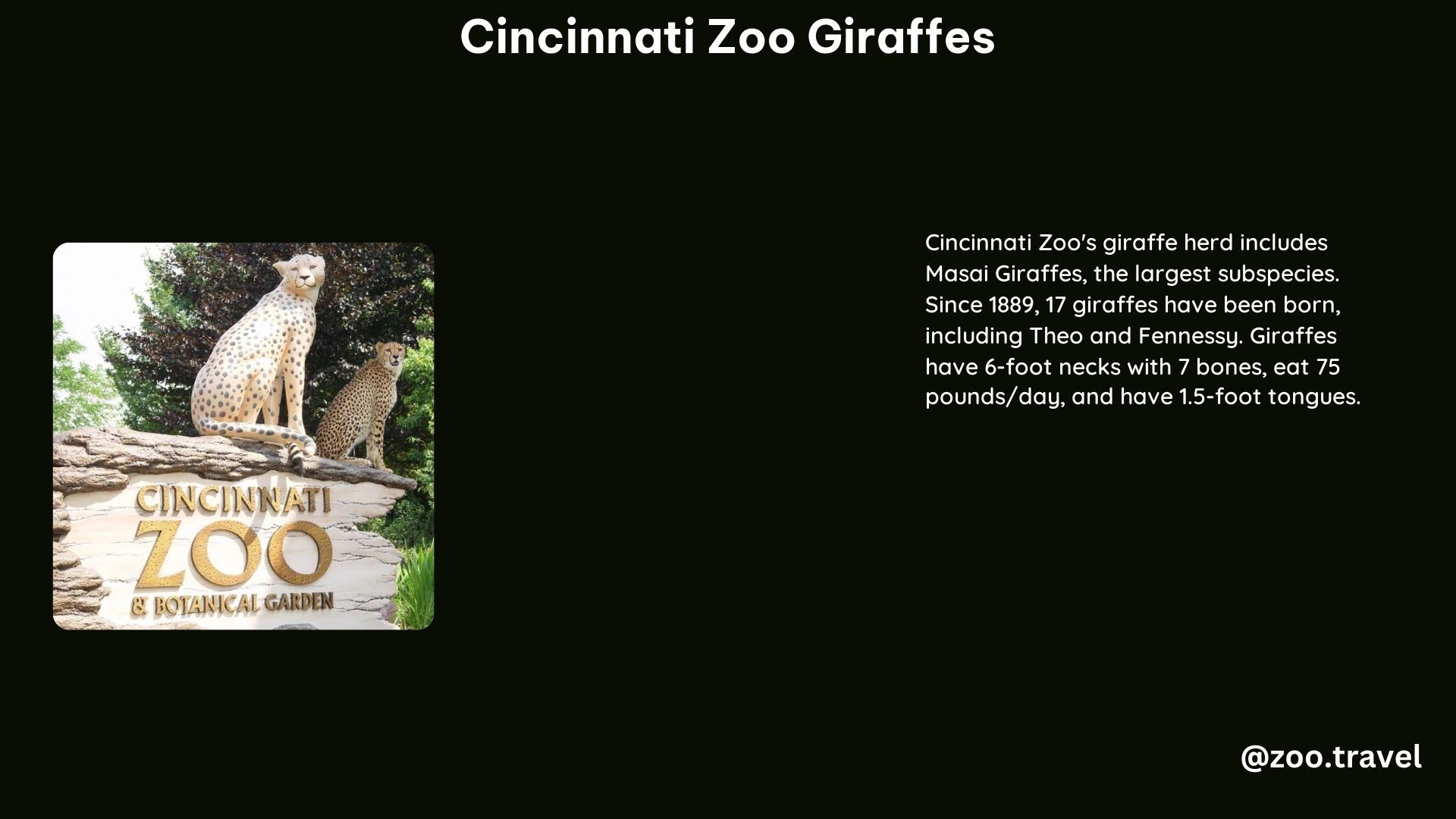The Cincinnati Zoo & Botanical Garden is home to a herd of Masai Giraffes, also known as the Kilimanjaro Giraffe, which is the largest subspecies of giraffe. These magnificent creatures captivate visitors with their towering stature, unique features, and fascinating behaviors. In this blog post, we’ll dive into the world of the Cincinnati Zoo’s giraffe herd, exploring their habitat, encounters, and conservation efforts.
Giraffe Ridge and Encounters
The Cincinnati Zoo’s Giraffe Ridge is the dedicated area where visitors can observe these towering animals up close. During the colder months, the giraffes can be seen through the windows of the giraffe barn, while outdoor appearances are weather-dependent. One of the most popular attractions at the zoo is the Giraffe Feedings, sponsored by Chick-fil-A, which resume during the spring season, along with other activities like train and carousel rides.
Giraffe Names and Births

The Cincinnati Zoo has a proud history of giraffe births, with the recent additions of Fennessy and Theo. Fennessy, a male giraffe calf, was born on June 17, 2019, to parents Tessa and Kimba, making him the 16th giraffe born at the Cincinnati Zoo since 1889. Theo, another male giraffe calf, was born on November 23, 2019, to mom Cece, and he is the 17th giraffe born at the Cincinnati Zoo since 1889.
Giraffe Facts and Conservation
Giraffes are listed as Vulnerable on the IUCN Red List due to various threats, including habitat loss, habitat degradation, habitat fragmentation, population growth, and poaching. The Cincinnati Zoo is committed to supporting wild Maasai giraffe conservation through education, scientific research, field work, public awareness, and action.
Giraffes possess several unique features that make them remarkable creatures. They have a six-foot-long neck containing just seven bones, the same number as other mammals. This extended reach allows them to forage on leaves inaccessible to other savanna dwellers, except for elephants. Their long tongue helps them strip leaves and fruits from branches, and their thick saliva protects their tongue from thorns.
Zoo Hours and Membership
The Cincinnati Zoo is open daily from 10 a.m. to 5 p.m. during the spring season. Members of the zoo’s membership program, generously supported by Frisch’s Big Boy, enjoy the benefit of early entry, starting at 9 a.m. beginning March 9.
Additional Resources
For those who can’t visit the Cincinnati Zoo in person, the zoo offers a “Home Safari” series on YouTube, where they share updates and insights into the lives of their animals, including the giraffe herd.
Whether you’re a local or a visitor, the Cincinnati Zoo’s Masai Giraffe herd is a must-see attraction. From the towering Giraffe Ridge to the engaging Giraffe Feedings, these magnificent creatures are sure to captivate and inspire you. Plan your visit to the Cincinnati Zoo today and witness the wonder of these incredible animals.
References
Cincinnati Zoo & Botanical Garden. (2024). Rides, Giraffe Feedings, and Early Entry for Members Resume this Weekend. Retrieved from https://cincinnatizoo.org/rides-giraffe-feedings-and-early-entry-for-members-resume-this-weekend/
Cincinnati Zoo & Botanical Garden. (2019). Oh Boy Cincinnati Zoo’s Baby Giraffe Named Fennessy. Retrieved from https://cincinnatizoo.org/oh-boy-cincinnati-zoos-baby-giraffe-named-fennessy/
Cincinnati Zoo & Botanical Garden. (2019). Cincinnati Zoo’s Baby Giraffe has a Name. Retrieved from https://cincinnatizoo.org/cincinnati-zoos-baby-giraffe-has-a-name-3/
Cincinnati Zoo & Botanical Garden. (2020). Home Safari – Giraffe – Cincinnati Zoo – YouTube. Retrieved from https://www.youtube.com/watch?v=s4aAXQM6J8Y
Cincinnati Zoo & Botanical Garden. Masai Giraffe – Cincinnati Zoo & Botanical Garden. Retrieved from https://cincinnatizoo.org/animals-archive/masai-giraffe/.
